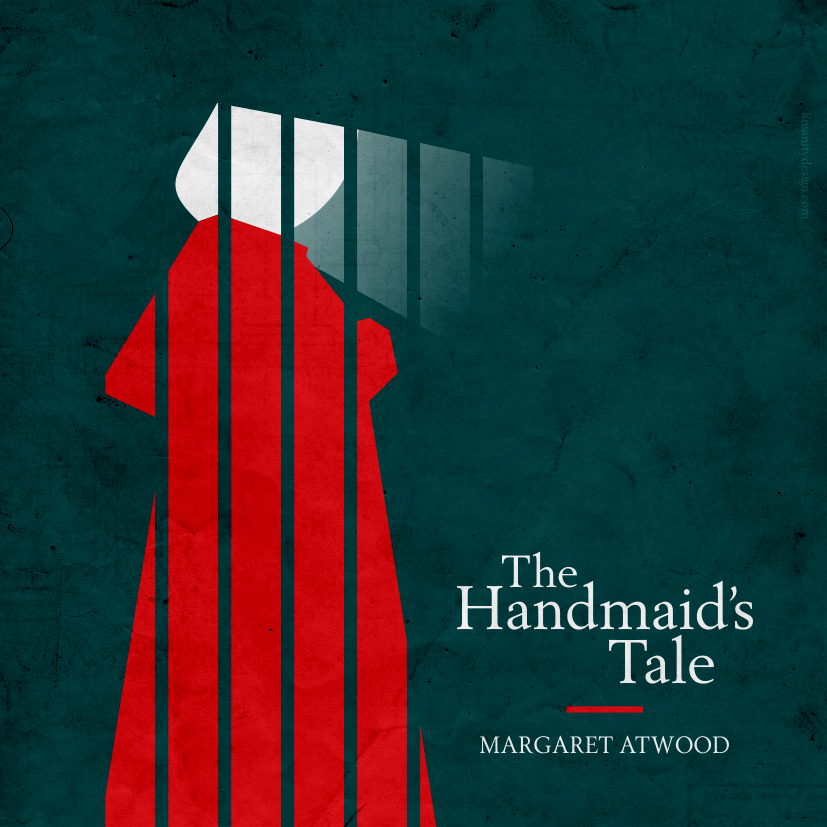
Thirty years on, the Williams Committee Report still provides a better framework for film classification than the lamentable Obscene Publications Act, says
Julian Petley
Thirty years ago, a Home Office committee chaired by Bernard Williams produced that rarest of publications — a sensible official document on the subject of obscenity. Commissioned in 1977 by a Labour government that still retained the last vestiges of the liberalism associated with Roy Jenkins’s first period as Home Secretary, the Williams Committee Report had the misfortune to be published in the early days of the anything-but-liberal Thatcher government.
The report was hastily kicked into the long grass by the new regime at the Home Office, greatly aided by papers such as the News of the World, The Times, theExpress, theTelegraph and theSunday People running scare stories — many decked out with alarmist quotes from Mrs Whitehouse — about it being a ‘pornographers’ charter’, ‘too blue for Maggie’ and ‘giving official sanction to filth’. In July 1980, when Leon Brittan, then Minister of State at the Home Office, announced that the government had still not reached any view on the Williams Committee’s recommendations and that he did not anticipate any legislation on the subject being introduced in the current session, it was abundantly clear that the report was dead in the water.
Given the remarkably ill-informed clauses in the Criminal Justice and Immigration Act 2008 outlawing the possession of ‘extreme pornography’ (aptly described in Index on Censorship by Anthony Julius QC as giving ‘an insight into the legislative mind that one would rather do without’), and various ministers’ Canute-like insistence that they can and will censor the Internet, it is clear that official thinking on the topic of censorship is becoming over-heated to the point of both incoherence and intolerance. It might therefore be useful to remind ourselves of what the generally level-headed Williams Committee had to say about the subjects of obscenity and censorship.
The committee’s report makes a basic distinction between material that is offensive and whose distribution needs only to be restricted, and material that is harmful and therefore needs to be prohibited. On this basis, the report concludes that ‘the existing variety of laws in this field should be scrapped and a comprehensive new statute should start afresh. Terms such as “obscene”, “indecent” and “deprave and corrupt” should be abandoned as having outlived their usefulness.’
It added: ‘The law should rest partly on the basis of harms caused by or involved in the existence of the material: these alone can justify prohibitions; and partly on the basis of the public’s legitimate interest in not being offended by the display and availability of the material: this can justify no more than the imposition of restrictions designed to protect the ordinary citizen from unreasonable offence. The principal object of the law should be to prevent certain kinds of material causing offence to reasonable people or being made available to young people. Only a small class of material should be forbidden to those who want it, because an objective assessment of likely harm does not support wider prohibition.’
Since the report was published, the notion of harm as a basis for censorship has been employed by government and by media regulators with increasing frequency.
The idea of harm as the only defensible basis of the prohibition of actions of any kind has its roots in John Stuart Mill’s famous dictum in On Liberty that ‘the sole end for which mankind are warranted, individually or collectively, in interfering with the liberty of action of any of their number is self protection … The only purpose for which power can be rightfully exercised over any member of a civilised community, against his will, is to prevent harm to others’.
Mill himself, however was far from consistent in his use of the term ‘harm’ in On Liberty. The major problem with this formulation is that once the notion of harm is extended to include something more than actual bodily injury, it is extremely difficult to avoid invoking values that may not be universally shared. People with differing moral outlooks may well disagree fundamentally over what actually constitutes harm. As Professor AWB Simpson, one of the committee’s members, put it in a retrospective look at the report, Pornography & Politics, the term harm ‘may be useful when it is narrowly defined to death, physical injury or deprivation of property. But it neglects the value of an alternative analysis which presents the problems in terms of competing values’.
The report itself makes the same point when it argues that there is a crucial difference between the harm undoubtedly done to the body by, for example, certain drugs and the harm that some allege is done by reading certain books. In the case of the latter, ‘there is a real question about “who is to judge” what counts as harm; since it is a question of moral harm, there is room for disagreement about what such harms are, and there is a danger that the moral opinions of some group, presumably some rather conservative group, should be made authoritative for the moral health of readers’. Williams thus stresses the importance of ‘the requirement, for legal purposes, that the causation of harm should lie “beyond reasonable doubt”’ and concludes, on the basis of the available evidence, that in the case of pornography this requirement has not been met — with one exception.
This exception concerns the harm done to certain of those involved in the production of pornography — namely adults who have been coerced into taking part, and children who, by virtue of their age, are simply unable to give informed consent. Williams adds that ‘the prevention of this harm also requires the power to suppress the pornographic product as well as the original act, so as not to provide the incentive to pornographers to flout the sexual offence law, or to deal without inhibition in products which are imported from other legal jurisdictions’.
On this basis, the report thus concludes that the only pornographic material that should be banned outright is that whose production appears to have involved sexual exploitation of any person either under the age of 16 or where actual physical harm was inflicted on that person.
So far so reasonable. However, when it comes to film, the committee suddenly abandons what one had taken to be a principle applying to all forms of expression — specifically that the distribution and display of material that some people might find offensive should be merely restricted and that only material whose making involved harm should be banned outright — and argues that ‘we think that the aim of treating all the media uniformly is misconceived; there is no reason why one solution should be expected to apply equally to a series of different problems’.
What seems to have brought about this apparent turnaround is an encounter with films that were about to be labelled ‘video nasties’. Thus the report reveals that ‘what clinched the argument for some of us at least was the sight of some of the films with which the censorship presently interferes. We feel it necessary to say to many people who express liberal sentiments about the principle of adult freedom to choose that we were totally unprepared for the sadistic material that some film makers are prepared to produce’.
Thanks to Professor Simpson we know that one such film was Ilsa – Harem Keeper of the Oil Sheiks, which is now easily available on DVD via Amazon.com and others, and one strongly suspects that some of the others are currently graced with British Board of Film Classification (BBFC) certificates. However, warming to its theme, the report continues: ‘it is not simply the extremity of the violence which concerns us: we found it extremely disturbing that highly explicit depictions of mutilation, savagery, menace and humiliation should be presented for the entertainment of an audience in a way that appeared to emphasise the pleasures of sadism. Indeed, some of the film sequences we saw seemed to have no purpose or justification other than to reinforce or sell the idea that it can be highly pleasurable to inflict injury, pain or humiliation (often in a sexual context) on others’.
So distressed was the committee by these films that it entirely abandoned its earlier insistence that, for censorship purposes, ‘the causation of harm should lie “beyond reasonable doubt”’ and fell back on what has always been the last resort of the censorious on these occasions –- speculation and ‘common sense’.
Admitting that research had not ‘demonstrated any convincing link between media violence and violence in society’, the report suggested that this was ‘due in part at least to the weakness of experimental research as a means of determining human motivations’, seemingly oblivious to the fact that such an argument could be made in relation to pornography as well. However, not daunted, the report argued that ‘it may be that this very graphically presented sadistic material serves only as a vivid object of fantasy, and does no harm at all. There is certainly no conclusive evidence to the contrary. But there is no conclusive evidence in favour of that belief, either, and in this connection it seems entirely sensible to be cautious’.
Thus in order to protect us from the likes of Ilsa, much of the machinery of the British Board of Film Censors (as it then was) was to remain intact, but within a new statutory body to be known as the Film Examining Board. This recommendation of the Williams Committee distinctly foreshadows what happened in 1984, when the Video Recordings Act conferred statutory powers upon the Board in its role as a video classifier and censor. We’ve seen why Williams wanted to retain film censorship, but why did the committee wish to put this practice in the hands of the state?
This idea had its origins in Williams’ eminently reasonable proposal that local authorities should be stripped of their powers to censor films, which means that the cinema, alone of all the arts, is subject to moral judgment by local councillors. However, doing this would cause a problem for the BBFC as the Board’s authority lies in the fact that the local authorities use the powers granted to them by Parliament in order to require cinemas within their jurisdiction to show only films to which the Board has granted a certificate. If local authorities lost those powers, the Board would have none of its own with which to replace them and its classifications would have no force.
Williams thus argued that parliament should institute a new statutory body which would have all the necessary powers to replace those exercised by local authorities. This would be called the Film Examining Board and would consist of a dozen people ‘chosen to reassure the public that censorship was to be operated with sense, independence and understanding of relevant expertise and of public feelings’. Its members would be drawn from the film industry, local authorities, and disciplines such as the law, child psychology and education. It would lay down general film censorship policy and ensure that this was followed by a staff of professional examiners which it would employ. Parliament would establish general guidelines for the Board and the broad criteria for each of its certificates, whilst the Board itself would determine the more specific policies to be adopted in censoring and classifying films. It would be an offence to exhibit publicly any film which had not received a certificate from the Board, and to exhibit publicly any film other than in accordance with requirements of the certificate issued to it.
Reverting to its earlier, more liberal tone, the report did, however, recommend the creation of a new classification for films, the 18R, which would allow for the showing of material that was judged ‘not unlawful or harmful but merely less than acceptable to local licensing authorities and the public at large’. Works granted this certificate could be shown only in cinemas designated by local authorities for the showing of such films. As examples the report cites ‘films of quality’ such as Pasolini’s Salò and Oshima’s Empire of the Senses along with ‘films of no merit which we consider adults should be able to see if they so choose. Most of the films concerned would contain explicit sex of a straightforward character’. The report concludes that if such a system was adopted ‘it will probably result, in practice, in there being two sorts of designated cinema. One will be a blue movie house which will rarely if ever show anything else. The other will be, to some degree, an “art” house, which shows a variety of films with various certificates, usually of minority appeal’.
Whether local authorities would have actually designated such cinemas, given their propensity to ban controversial films such as The Life of Brian, The Devils and Crash, is actually open to considerable doubt. One also suspects that Ilsa and the soon-to-be-designated ‘video nasties’ would have been as resolutely banned by the Film Examining Board as they were by the BBFC. The authorities in Britain have always been terrified of allowing full rein to the expression of popular cultural tastes, and the liberal-minded Williams Committee was no exception –– witness its evident distaste for those viewers for whom the ‘extreme vividness and immediacy of film may make it harder rather than easier … to tell the difference between fantasy and reality’ (a formulation that suggests rather more than a merely intellectual snobbery at work). In respect of official attitudes towards adult material, it’s extremely significant that in 2007, a BBFC considerably more liberal than it was in 1979 made the vast majority of its cuts in the two adults-only categories, where one might have expected it to show the greatest leniency.
Most of this activity was occasioned by the requirements of the Video Recordings Act which, in the Board’s own words requires it ‘to have special regard (among the other relevant factors) to the likelihood of works being viewed in the home, and to any harm to those likely to view a video [and] any harm to society through the behaviour of those viewers afterwards’, and of the Obscene Publications Act which, the Board explains, entails that ‘a work may be found obscene if, taken as a whole, it has a tendency to deprave and corrupt (ie make morally bad) a significant proportion of those likely to see it)’.
It is surely time that such crude and archaic notions were laid to rest, and that Williams’ eminently sensible recommendations on non-filmic material were put into practice right across the board. For all its portentous talk of ‘depraving and corrupting’, the Obscene Publications Act, in practice, does little more than try to enforce current official standards of taste and decency.
Meanwhile the BBFC is saddled with legislation posited on a highly dubious notion of ‘harm’, which forces its unfortunate staff to spend countless hours trying to figure out if self evidently adults-only material is infringing a thoroughly ill-conceived law introduced on the back of a moral panic about ‘video nasties’. The BBFC changed its name in 1984 from the British Board of Film Censors to the British Board of Film Classification and it should finally be allowed to be just that –– an extremely useful and well-informed source of consumer guidance, not least for parents, but not a statutory arbiter of adult tastes.
Julian Petley is professor of Screen Media and Journalism in the School of Arts at Brunel University, and author of the forthcoming Censorship: a Beginner’s Guide





